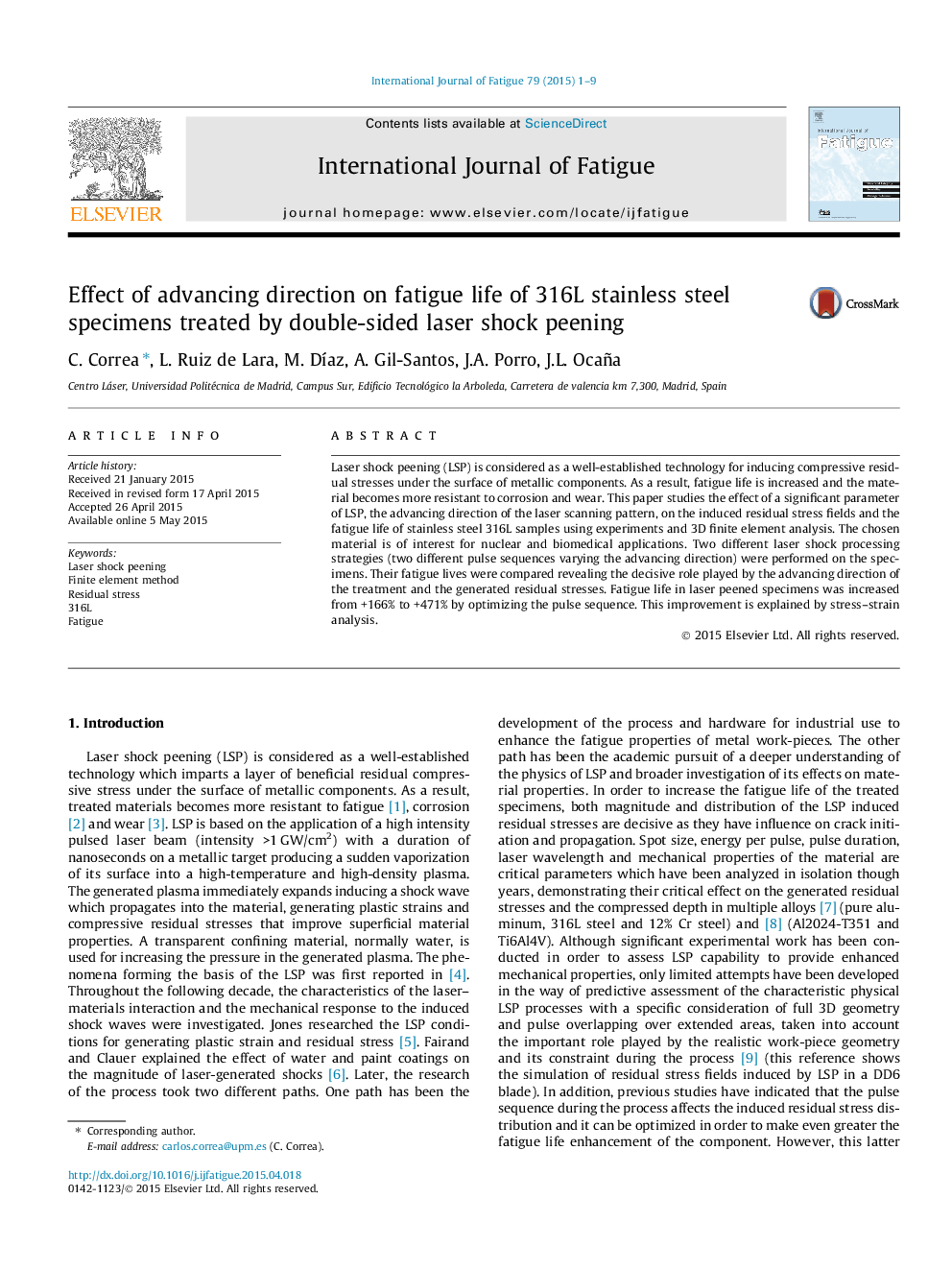| Article ID | Journal | Published Year | Pages | File Type |
|---|---|---|---|---|
| 778214 | International Journal of Fatigue | 2015 | 9 Pages |
•Simulations explain the influence of advancing direction on residual stresses.•Fatigue life in laser peened stainless steel 316L specimens can be increased (+471%) by optimizing the pulse sequence.•3D FEM model allows to simulate massive parallel LSP over real geometries.•Good match between simulations and experimental results.
Laser shock peening (LSP) is considered as a well-established technology for inducing compressive residual stresses under the surface of metallic components. As a result, fatigue life is increased and the material becomes more resistant to corrosion and wear. This paper studies the effect of a significant parameter of LSP, the advancing direction of the laser scanning pattern, on the induced residual stress fields and the fatigue life of stainless steel 316L samples using experiments and 3D finite element analysis. The chosen material is of interest for nuclear and biomedical applications. Two different laser shock processing strategies (two different pulse sequences varying the advancing direction) were performed on the specimens. Their fatigue lives were compared revealing the decisive role played by the advancing direction of the treatment and the generated residual stresses. Fatigue life in laser peened specimens was increased from +166% to +471% by optimizing the pulse sequence. This improvement is explained by stress–strain analysis.
